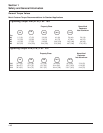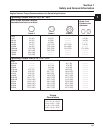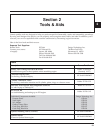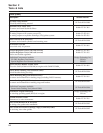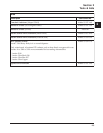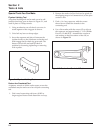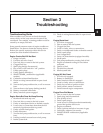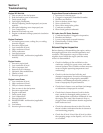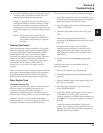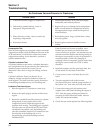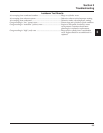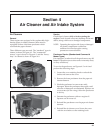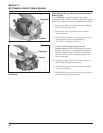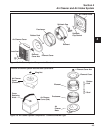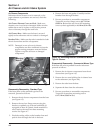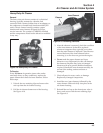
3.3
Section 3
Troubleshooting
3
• Check the condition of the oil. Drain the oil into a
container - the oil should flow freely. Check for
metal chips and other foreign particles.
Sludge is a natural by-product of combustion; a
small accumulation is normal. Excessive sludge
formation could indicate overrich carburetion,
weak ignition, overextended oil change intervals
or wrong weight or type of oil was used, to name
a few.
NOTE: It is good practice to drain oil at a
location away from the workbench. Be
sure to allow ample time for complete
drainage.
Cleaning the Engine
After inspecting the external condition of the engine,
clean the engine thoroughly before disassembling it.
Also clean individual components as the engine is
disassembled. Only clean parts can be accurately
inspected and gauged for wear or damage. There are
many commercially available cleaners that will
quickly remove grease, oil, and grime from engine
parts. When such a cleaner is used, follow the
manufacturer’s instructions and safety precautions
carefully.
Make sure all traces of the cleaner are removed before
the engine is reassembled and placed into operation.
Even small amounts of these cleaners can quickly
break down the lubricating properties of engine oil.
Basic Engine Tests
Crankcase Vacuum Test
A partial vacuum should be present in the crankcase
when the engine is operating. Pressure in the
crankcase (normally caused by a clogged or
improperly assembled breather) can cause oil to be
forced out at oil seals, gaskets, or other available spots.
Crankcase vacuum is best measured with either a
water manometer, or a vacuum gauge (see Section 2).
Complete instructions are provided in the kits.
To test the crankcase vacuum with the manometer:
1. Insert the stopper/hose into the oil fill hole. Leave
the other tube of manometer open to atmosphere.
Make sure the shut off clamp is closed.
2. Start the engine and run at no-load high speed
(3200 to 3750 RPM).
3. Open the clamp and note the water level in the
tube.
The level in the engine side should be a
minimum of 10.2 cm (4 in.) above the level in the
open side.
If the level in the engine side is less than
specified (low/no vacuum), or the level in the
engine side is lower than the level in the open
side (pressure), check for the conditions in the
table below.
4. Close the shut off clamp before stopping the
engine.
To test the crankcase vacuum with the Vacuum/
Pressure Gauge Kit:
1. Remove the dipstick or oil fill plug/cap.
2. Install the adapter into the oil fill/dipstick tube
opening.
3. Push the barbed fitting on the gauge solidly into
the hole in the adapter.
4. Start the engine and bring it up to operating
speed (3200-3600 RPM).
5. Check the reading on the gauge. If the reading is
to the left of “0” on the gauge, vacuum or
negative pressure is indicated. If the reading is to
the right of “0” on the gauge, positive pressure is
present.
Crankcase vacuum should be 4-10 (inches of
water). If the reading is below specification, or if
pressure is present, check the following table for
possible causes and remedies.



